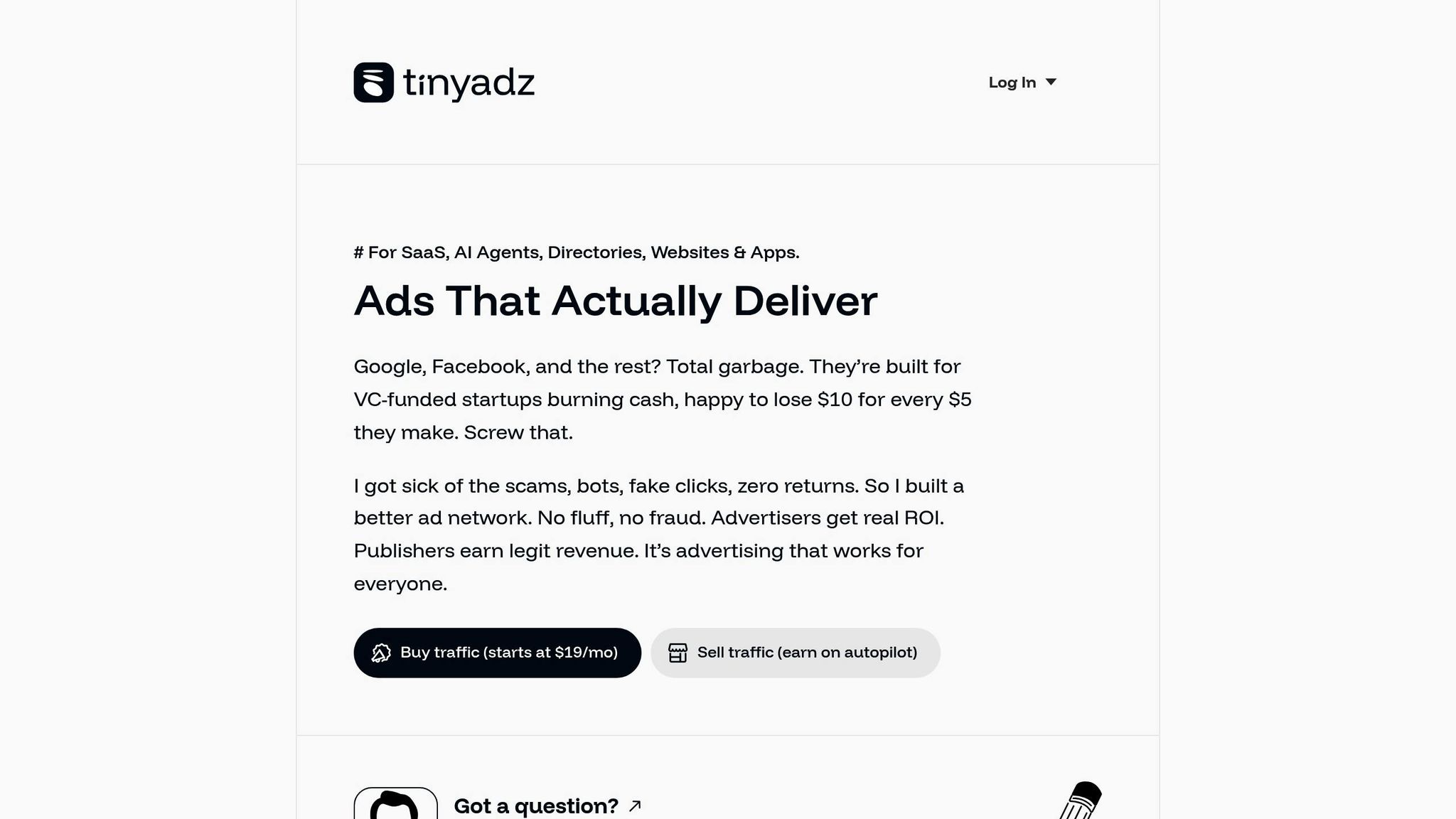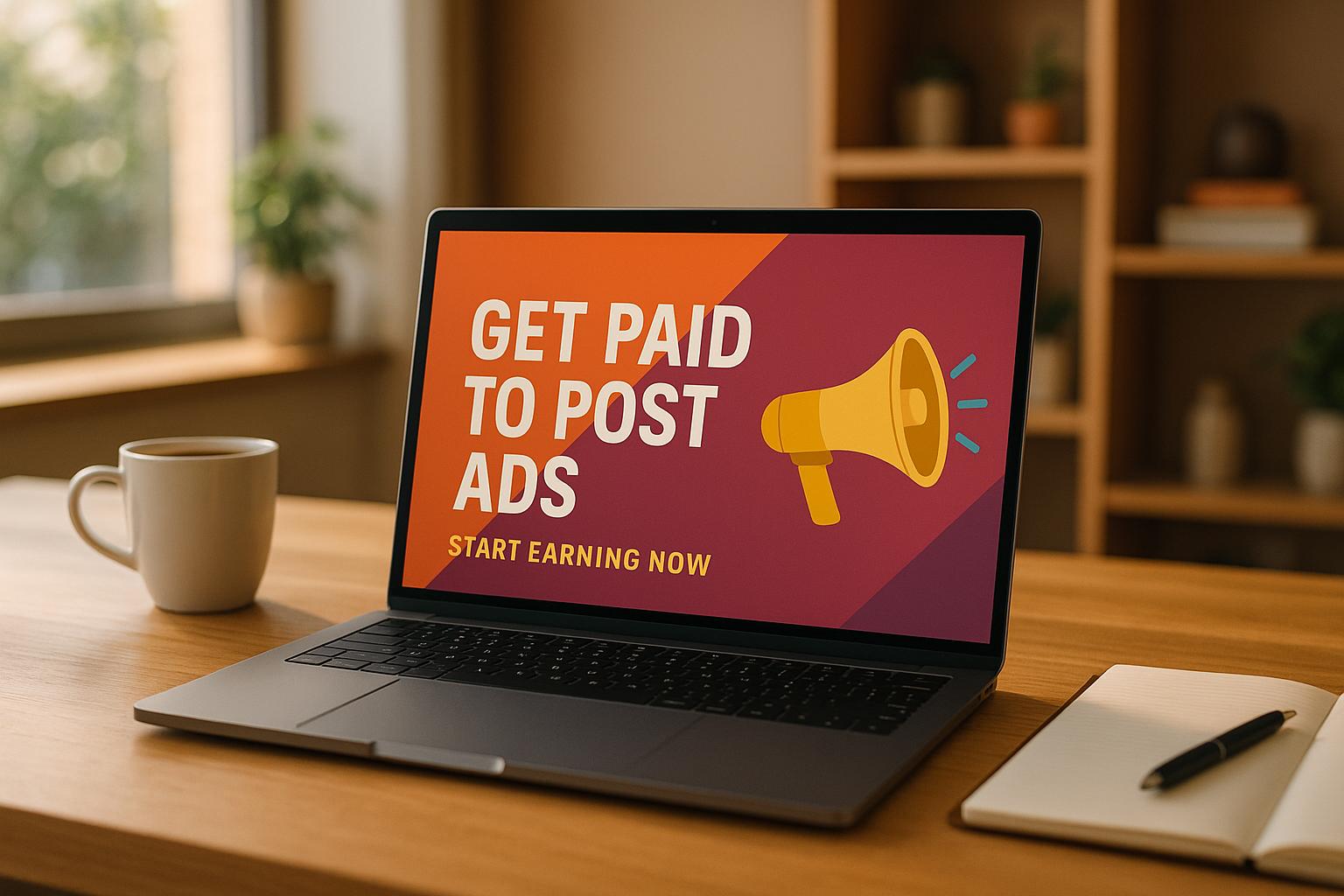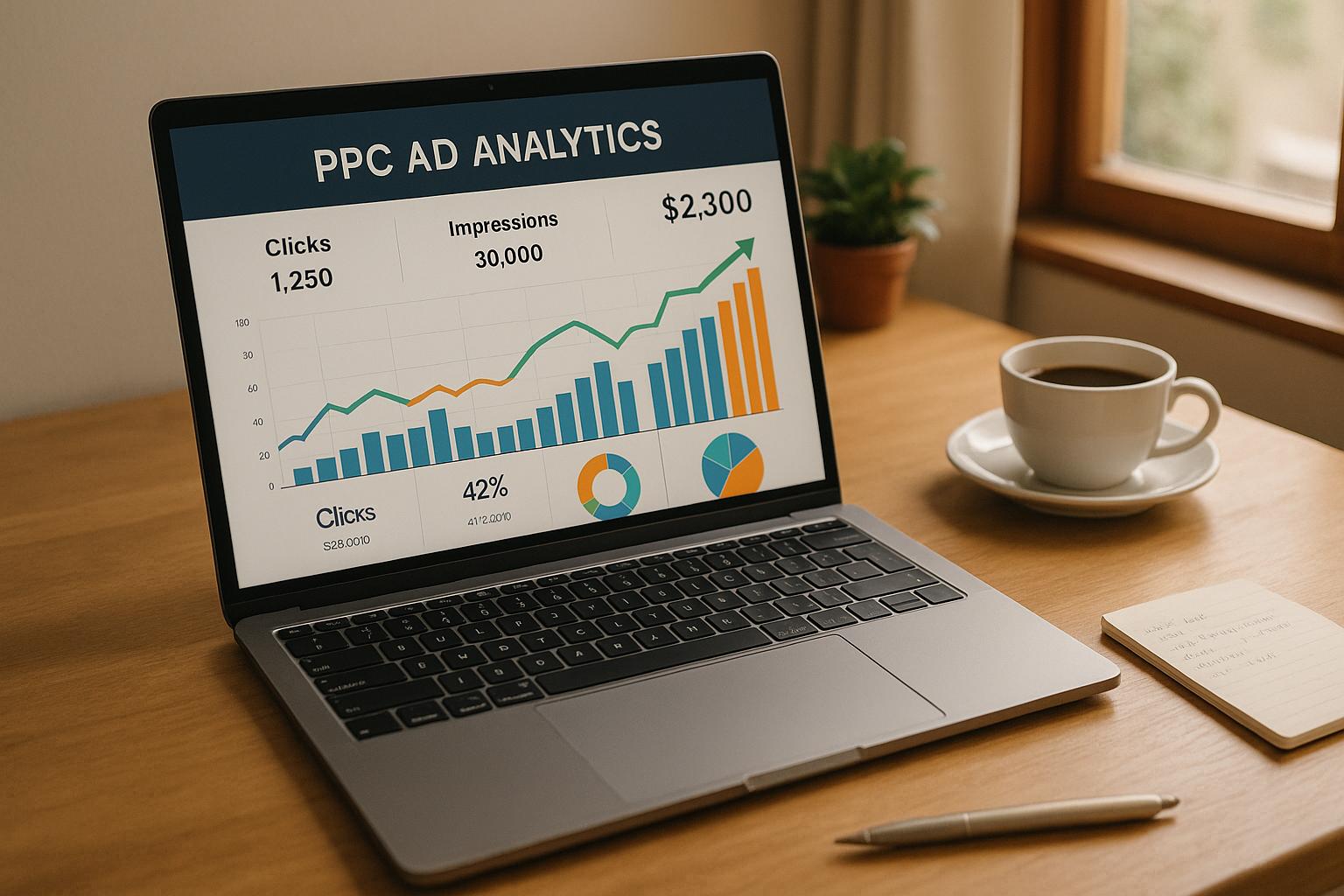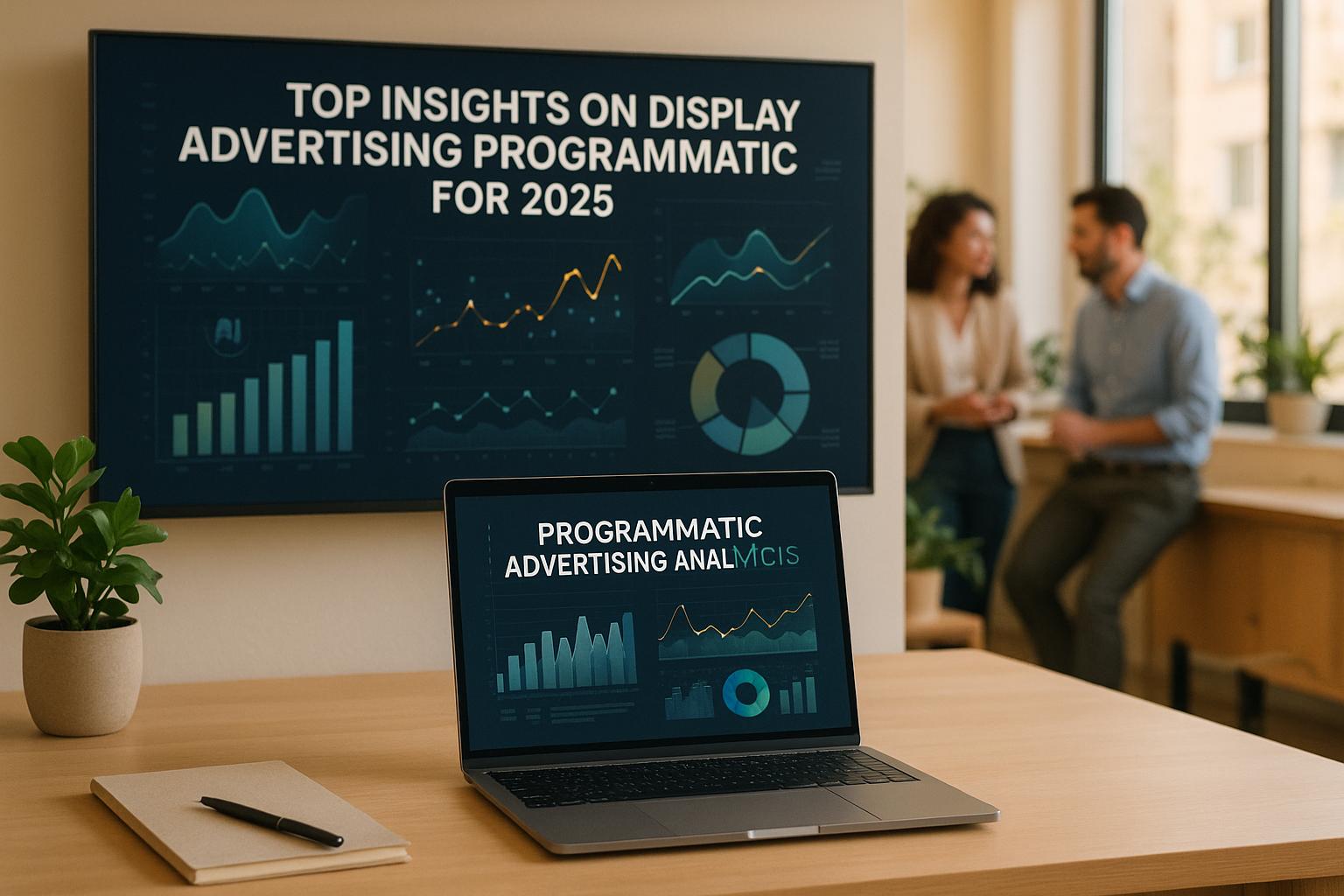Publishers are essential for effective digital advertising in 2025. Here's why:
- Targeted Audiences Work Better: Advertisers find niche publishers more effective, as they connect with specific, engaged audiences rather than broad, generic ones. For example, niche-focused communities see up to 15% higher engagement rates.
- AI and First-Party Data Lead the Way: 72% of publishers use AI and first-party data for personalized, privacy-friendly advertising, boosting engagement and revenue by 40%.
- New Revenue Streams: Publishers are diversifying with e-commerce, events, and subscription models. Publisher commerce revenue grew by 42% in 2024.
- High-Engagement Ads: Formats like vertical videos and contextual ads drive better results. For instance, contextual ads increase click-through rates by 50%.
- Lower Costs for Advertisers: Targeted ads on niche platforms reduce customer acquisition costs by up to 30%.
Publishers remain vital because they build trust, deliver relevant content, and offer advertisers unique ways to connect with audiences. Dive into the article to learn how publishers are adapting and thriving in the evolving advertising landscape.
2024 Ad Tech Industry Trends and the Implications for Publishers in 2025
How Publishers Enable Targeted Advertising
Publishers today are shifting from broad-reach campaigns to more focused, data-driven advertising strategies. By combining first-party data and contextual insights, they connect advertisers with highly relevant audiences, improving efficiency and engagement.
Using First-Party Data for Better Targeting
With third-party cookies on the decline, publishers are turning to their most valuable resource: first-party data. This data, collected directly through registrations, surveys, and behavioral tracking, provides deep insights into audience preferences. By segmenting users based on factors like demographics, interests, and engagement, publishers help advertisers create precise, highly targeted campaigns.
The results speak for themselves. Research shows that 81% of marketers report their best ROI when using first-party data. Additionally, businesses leveraging data-driven strategies see 5 to 8 times more ROI compared to those that don’t. It's no surprise that 60% of U.S. brands and agencies plan to increase their reliance on publishers' first-party data for ad placements in 2024.
Here's a real-world example: Class Editori partnered with Mapp to analyze reader behavior and track high-engagement content. This strategy boosted subscriptions and drove sustained growth. Another case involves a news portal tailoring its approach to a car enthusiast named Noah. By studying his browsing habits, they placed exclusive motorsports content behind a paywall and offered personalized subscription discounts through banner ads. These examples show how first-party data not only enables precise targeting but also opens up new monetization opportunities for publishers - all while respecting user privacy.
Contextual Ads and Building Audience Trust
Contextual advertising takes a different approach by placing ads based on the content users are actively viewing rather than relying on their browsing history. This method is privacy-friendly and highly effective. Research reveals that users are 50% more likely to click on ads when contextual strategies are used. Furthermore, 69% of consumers are more inclined to engage with ads that align with the content they’re reading, and 44% have even tried new brands because of such ads.
A standout example is CVS, which used contextual ads to target consumers in high-risk flu areas. Their campaign reached 42 million unique visitors, delivered 644 million ad impressions, and saw over 77% of users clicking on targeted messages. This approach not only respects privacy by minimizing data tracking but also fosters trust by delivering ads that feel relevant and timely. Campaigns from brands like VASTLAND and Waken Mouthcare further illustrate how contextual ads can strengthen brand engagement and loyalty. With 67% of consumers open to discovering new brands through relevant ads, contextual advertising continues to enhance relationships between publishers and their audiences.
How TinyAdz Powers Targeted Advertising

TinyAdz combines the strengths of first-party data and contextual advertising to offer publishers powerful ad solutions. By connecting advertisers with real users on niche platforms, TinyAdz ensures campaigns are tailored to specific audiences.
One of TinyAdz’s standout features is its commitment to 100% human impressions, eliminating concerns about bot traffic. Publishers can explore flexible monetization options, including banner ads, directory monetization, social media revenue, and event-based advertising - all designed to cater to various content types and platforms.
The platform also provides real-time performance reporting, helping publishers fine-tune campaigns with actionable insights. With lightweight ad designs that prioritize quick conversions and a simple signup process requiring no minimum traffic, TinyAdz makes targeted advertising accessible to publishers of all sizes. This combination of precision targeting and seamless integration empowers publishers to maximize their advertising potential while maintaining a strong connection with their audience.
Revenue Strategies for Publishers
As traditional advertising wanes, publishers are finding it essential to diversify their revenue streams. The goal is to create multiple income sources that work together seamlessly, ensuring steady growth while maintaining the trust of their audience.
Creating Multiple Revenue Sources
Relying solely on display advertising is no longer enough. By 2024, alternative revenue sources are projected to account for 21.6% of publishers' total revenue globally. This shift underscores the importance of diversification for long-term stability.
Many publishers are blending several revenue strategies to reduce dependency on a single source. For instance, 68% of publishers now earn at least part of their revenue from affiliate commerce. Others are tapping into sponsored content, hosting events, and adopting subscription models to safeguard against market fluctuations.
Take The Independent, for example. Its "Indy Best" series contributes roughly 10% of its revenue by focusing on curated shopping experiences and leveraging data analysis to better understand products and consumer behavior. Similarly, GQ has seen steady growth in e-commerce revenue since 2017 by seamlessly integrating shopping into its content. With curated shopping guides and targeted email campaigns like "GQ Recommends", the magazine prioritizes quality over quantity, branching out into lifestyle categories beyond its traditional fashion focus.
Hearst has pushed diversification even further by creating unique digital and physical products. These include All/Out Studio, a $100-per-year fitness video service, as well as branded items like the Backslash Fit yoga mat and cookbooks like Keto for Carb Lovers. This approach demonstrates how publishers can capitalize on their brand identity across various formats.
"Putting in 'buy' buttons just because you have a big audience is a failed idea...if you think about it as commerce becoming a byproduct of your reader trust - and trust being the main product - then I think you have the ability to succeed." - Raju Narisetti, professor at Columbia Journalism School
Events are also becoming a critical revenue source, ranking as the fourth most important for media companies in 2024. Webinars, industry panels, and brand-sponsored events are particularly effective for niche publications with highly engaged audiences.
High-Engagement Ad Formats
Traditional banner ads are seeing diminishing returns, but publishers can still boost revenue by adopting ad formats that prioritize user engagement. Video ads, for example, consistently outperform text and banner ads in click-through rates and audience interaction.
Rewarded ads, which offer incentives for engagement, achieve near-perfect completion rates and earn 50–100% higher eCPMs than standard interstitial ads. Similarly, Half-Screen Ads generate 2 to 3 times more engagement than traditional banners, while rich media ads deliver 79% more user interaction and a notable increase in brand and message recall.
"We witnessed in-stream video ads significantly outperforming out-stream ones, increasing eCPMs by 80%." - Ivan Liashok, CEO of Bidmatic.io
Native ads also stand out as a less intrusive option, with desktop CTR rates of 0.16% and mobile rates of 0.38%. To maximize their effectiveness, publishers should place these ads at natural transition points within content and optimize them for mobile viewing.
Making Money Across Different Platforms
To unlock their full revenue potential, publishers must expand beyond their primary websites and leverage multiple platforms.
Dynamic paywalls are one effective strategy. Publishers using these adaptive systems have seen subscription conversion rates jump by an average of 35% compared to static models. For instance, Bangor Daily News increased direct paywall subscriptions by 47% and achieved a 2.3x boost in conversion rates after switching to an AI-powered dynamic paywall system. Similarly, ELLE Magazine France personalized subscription offers based on newsletter referrals, leading to higher engagement and conversions.
Social media and OTT (over-the-top) platforms also offer lucrative opportunities. Publishers with dedicated OTT strategies have reported a 45% annual growth in streaming ad revenue. Video content, especially shoppable formats, has proven highly effective, with conversion rates 2.2 times higher than traditional affiliate links. Narcity, for example, revamped its reader experience with video-powered "stories", resulting in a 48x increase in video plays and a 52% rise in average time spent on-site.
Platforms like TinyAdz make it easier for publishers to monetize across websites, social media, newsletters, and events. By offering tools like banner ads, directory monetization, and event-based advertising - without traffic minimums - TinyAdz ensures quality engagement with 100% human impressions and real-time reporting.
Newsletters are another underutilized goldmine. Ranker, for example, used behavior analytics and on-site voting systems to build detailed user profiles, creating high-intent audiences. This strategy led to a fourfold revenue increase year-over-year and a 25% win rate in Request for Proposals.
For publishers, success across platforms hinges on maintaining a consistent brand voice while tailoring content to each medium. Mobile-first strategies are especially critical, as vertical video formats optimized for mobile consumption achieve 50% higher engagement rates. By embracing these multi-platform approaches, publishers can maximize returns while preserving transparency and trust in their advertising efforts.
sbb-itb-957fd63
Improving Returns and Maintaining Transparency
Publishers today face the dual challenge of boosting campaign returns while ensuring transparency. Achieving this balance involves leveraging advanced analytics tools and adopting verified ad detection methods, paired with a commitment to clear and honest reporting.
Using Analytics and Reporting Tools
Analytics platforms have become essential for publishers to demonstrate their value to advertisers and fine-tune performance. In fact, over 90% of companies report measurable benefits from these tools. Modern solutions offer real-time reporting, customizable dashboards, and user-friendly formats that make data actionable for both publishers and advertisers. These features not only help track progress but also meet advertisers' growing demand for transparency.
When choosing an analytics platform, publishers should first identify their specific business goals. For instance, a local lifestyle blog will have different priorities compared to a B2B tech site. It's also important to assess the tool's features, scalability, and cost-effectiveness. For smaller publishers, Google Analytics offers a free and accessible option. More advanced platforms like Tableau (starting at $35/month) and Semrush ($139.95/month) cater to those with greater needs. Mid-range options include Mixpanel ($24/month) and Hotjar ($49/month), while Zoho Analytics provides flexible plans ranging from $24 to $455+ per month.
For publishers managing sensitive audience data, security is non-negotiable. The chosen platform must integrate seamlessly with existing IT systems and comply with data privacy regulations. This ensures not only smooth operations but also fosters trust with advertisers.
Fighting Fake Traffic with Verified Methods
Ad fraud remains a massive issue, with global losses projected to hit $172 billion by 2028. Alarmingly, over 20% of ad traffic is generated by bots. To combat this, publishers need robust ad verification tools that use real-time scanning and machine learning to detect fraudulent activity. These tools analyze patterns like unusual click behavior, traffic from data centers, and a lack of authentic user engagement.
For example, IAS reports a 91% higher bot detection rate compared to a leading competitor, emphasizing the risks of neglecting proper fraud mitigation. Assembly Digital, a Canadian media group, successfully partnered with GeoEdge to maintain ad quality using tools like AdWatch, keyword search, and brand filtering. This partnership improved compliance efficiency and enhanced ad performance metrics such as return visits and click-through rates.
Another critical step is regularly updating ads.txt and app-ads.txt files, which ensure that only authorized sellers can represent a publisher's inventory. A study showed that 74% of publishers who implemented ads.txt experienced fewer fraud attempts. Publishers should also monitor inventory quality, reject traffic from low-quality sources, and renegotiate vendor pricing when necessary. Keeping a close eye on sudden spikes in impressions or clicks from unusual sources helps detect and address issues early.
"This helps us detect abnormal traffic patterns immediately and take action against problematic sources." - Andrey Ivanov, Chief Security Officer, PropellerAds
Improving Campaigns for Better Returns
Optimizing campaigns is essential for achieving better results, and transparency plays a central role. One effective strategy is Supply Path Optimization (SPO), which identifies the most efficient and transparent pathways for purchasing digital ad inventory. Inefficiencies in programmatic ad spend account for over 60% of wasted budgets, but implementing SPO can save advertisers an average of 30% in costs.
Publishers can gain a competitive edge by partnering with reputable DSPs, SSPs, and ad exchanges that prioritize transparency. Transparency standards like Ads.txt and Sellers.json further enhance trust within the programmatic supply chain. Additionally, third-party verification tools can monitor ad placements, viewability, and brand safety, while detailed reporting ensures advertisers have full visibility into their campaigns.
The financial upside of transparency is clear. Advertisers can see up to a 15% boost in ROI, while publishers may enjoy CPM rate increases of up to 20%. To maximize returns, publishers should focus on top-performing channels and maintain open communication with stakeholders.
"Supply Path Optimization (SPO) identifies the right path to bid and win inventory at the best price, empowering you to take ownership and accountability for your supply chain. SPO's goal is to help buyers access quality inventory and minimize wasted impressions." - The Goodway Group
Solving Current Publisher Advertising Problems
For publishers, keeping revenue streams steady while overcoming advertising challenges is a top priority. From falling CPM rates to juggling monetization with user experience, these hurdles demand smart, actionable strategies. Tackling these issues effectively ensures publishers can thrive across multiple platforms and secure long-term success. Below, we dive into practical approaches to optimize CPMs, enhance user experience, and boost returns across platforms.
Addressing Lower CPMs
Declining CPM rates have become a significant pain point. Programmatic campaigns now typically yield only $2 to $5 per 1,000 impressions, a stark contrast to local campaigns, which can generate $15 to $20 per 1,000 impressions. This drop is partly due to shrinking budgets from national advertisers.
Local advertisers, however, offer a promising revenue stream. Publishers can target this market by offering tailored packages that include services like banner design, landing page creation, and a set number of local ad impressions. A great example is Schwäbisch Media in Ravensburg, Germany. By automating small ad bundles for their weekly and daily publications, they generated over $300,000 in annual profits.
CPM performance is also influenced by factors like user engagement, location, seasonality, and traffic sources. To combat low CPMs, publishers should focus on driving organic traffic with SEO and optimizing sites for mobile, as mobile traffic often commands better rates. Testing new ad formats, such as in-page push ads or Social Bar ads, can also help increase engagement and CPMs.
Finding the Balance Between Ad Revenue and Reader Experience
Striking the right balance between ad revenue and user experience is no easy task. Ad blockers alone are expected to cost publishers $54 billion in lost revenue by 2024. To counter this, publishers should rely on data-driven insights and conduct A/B testing to optimize ad placements without disrupting the reader's journey.
Rotating ad creatives and positioning them thoughtfully - like above the fold or seamlessly within content - can prevent user fatigue and improve viewability. Incorporating video content is another smart move, as 87% of marketers report higher engagement with video. Additionally, implementing ad refresh functionality, which updates ads dynamically on a page, can increase impressions without requiring users to leave the content they’re enjoying. These strategies not only improve revenue but also maintain a positive user experience.
Optimizing Revenue Across Platforms
To sustain growth, publishers must refine their multi-platform strategies. With programmatic advertising projected to account for 81% of digital ad revenue by 2028, and digital display ad spending set to surpass $500 billion by 2024, diversifying revenue streams is more important than ever.
Programmatic advertising through SSPs and DSPs simplifies the ad-buying process while connecting publishers to a broader pool of advertisers. Adding header bidding, whether client-side or server-side, can further optimize pricing and streamline operations. Beyond traditional ads, publishers can explore alternative income sources like paid subscriptions, affiliate marketing, and webinars to create more stable revenue streams.
As third-party cookies phase out, leveraging first-party data for audience segmentation becomes crucial. Mobile optimization should remain a top priority. Regularly updating Ads.txt files and analyzing unfilled impressions can uncover hidden monetization opportunities.
The key to success lies in constant adaptation. Publishers should continuously analyze performance, experiment with new ad formats, and establish strategic partnerships to stay competitive in an ever-evolving landscape. These efforts ensure sustainable revenue growth across platforms, even in a challenging environment.
Conclusion: Why Publishers Still Matter in Advertising
Even in a fast-evolving digital landscape, publishers remain vital allies for advertisers aiming to connect meaningfully with audiences in 2025. Their ability to build genuine relationships, utilize first-party data, and stay ahead of technological trends cements their role as indispensable players in the advertising world.
Key Takeaways for Publishers and Advertisers
Publishers are at the heart of modern advertising success. By 2025, consolidated media groups control over 65% of digital advertising inventory in major markets - a 12% jump from 2023. Publishers leveraging AI-driven content are seeing notable boosts in engagement and revenue. Rather than weakening the publisher model, this consolidation has supercharged it, enabling more sophisticated and data-focused advertising solutions.
For publishers, the future lies in embracing AI tools and dynamic paywalls. These strategies have already delivered impressive results, with a 35% rise in subscription conversion rates reported. Diversifying revenue streams is equally important - shoppable video content now delivers conversion rates 2.2x higher than traditional affiliate links, while publisher commerce revenue surged by 42% in 2024.
"Authors who have spent time building and fostering their audience will find themselves with more leverage in 2025 when it comes to negotiating with traditional publishers." - Matt Briel, VP of Marketing at Lulu
On the advertiser side, the benefits are just as compelling. Publishers offering integrated content packages see engagement rates 30% higher than average. Social-first video packages, meanwhile, command CPMs that are 45% higher than traditional display ads. Tourism boards using AI-powered personalized video trip planners in partnership with publishers achieved conversion rates three times higher than standard display ads. This synergy between advertisers and publishers thrives on trust and contextual relevance, which automated platforms struggle to replicate.
Trust remains a cornerstone of publishers' value. Their ability to provide contextually relevant, authentic content resonates with consumers who increasingly demand personalized and meaningful advertising experiences.
Opportunities Ahead for Publishers
Publishers have a bright future if they continue to innovate. AI now drives 70% of digital marketing strategies, and those who adopt these tools effectively stand to gain the most. Changing search habits also open new doors, with 40% of Gen Z turning to social platforms as their primary search tool, while voice searches now account for 20% of mobile queries.
Social commerce is another growing market, projected to surpass $1 trillion by 2028. Publishers who create seamless shopping experiences within their content ecosystems will be well-positioned to tap into this trend. Meanwhile, the blending of physical and digital experiences - dubbed "phygital" marketing - offers a chance for publishers to stand out, building on their strengths in revenue diversification and first-party data.
"The digital marketing trends we're seeing in personalization are revolutionary - brands can now create truly individual experiences at scale." - Sarah Chen, Leading Digital Marketing Trends Analyst
Ethical and inclusive marketing also aligns perfectly with publishers' editorial expertise. With 80% of consumers willing to pay more for sustainably produced goods, publishers who authentically champion values-driven content will attract loyal audiences and premium advertisers alike.
First-party data continues to be publishers' most powerful asset. As third-party cookies phase out, publishers with strong audience relationships and advanced identity tools will command higher ad rates. Publishers using first-party data for personalization have already seen subscription rates climb by 60%, proving its value extends beyond advertising into direct revenue.
The publishers who thrive in the years ahead will be those who see themselves not just as content creators, but as integrated media and commerce powerhouses. The blending of publishing, retail, and technology unlocks potential for revenue models that were unimaginable just a few years ago. By staying true to their core strength - authentic audience connections - publishers will continue to shape the future of advertising.
FAQs
How can publishers use first-party data to improve ad targeting and engagement?
Publishers can tap into the full potential of first-party data by diving deep into audience behaviors, preferences, and demographics. This approach allows them to craft ad campaigns that are not just personalized but also laser-focused, ensuring the ads strike a chord with their audience. The result? Stronger engagement and a noticeable boost in ROI.
To sharpen targeting efforts, it's essential to prioritize data accuracy, use predictive analytics to anticipate trends, and fine-tune campaigns based on performance metrics. This not only makes ads more impactful but also builds trust with advertisers by offering transparency and delivering measurable outcomes.
How are publishers successfully diversifying their revenue streams beyond traditional advertising?
Publishers are broadening their horizons by exploring revenue options beyond traditional advertising. Many are turning to e-commerce and affiliate marketing, leveraging partnerships and product promotions to open up fresh income streams. Hosting events, webinars, and conferences has also emerged as a popular way to connect with audiences while bringing in extra revenue.
Other tactics include offering subscriptions, premium content, or even consulting services, which provide a steadier, more predictable income. Some publishers are also ethically monetizing their data to deliver value to advertisers. These strategies help reduce reliance on ad revenue, allowing publishers to build more diverse and sustainable income sources in an increasingly competitive digital landscape.
Why is contextual advertising becoming a crucial strategy for publishers in today’s digital world?
Contextual advertising has become increasingly valuable as it provides a privacy-conscious method for delivering highly relevant ads to users. Rather than depending on personal data, it works by aligning ads with the content users are actively engaging with, enhancing both the user experience and the effectiveness of the ads.
For publishers, this strategy addresses rising consumer demands for privacy while also boosting engagement and revenue. By matching ads to relevant content, publishers can uphold advertiser confidence and stay ahead in the shifting digital landscape - all without sacrificing user privacy.


